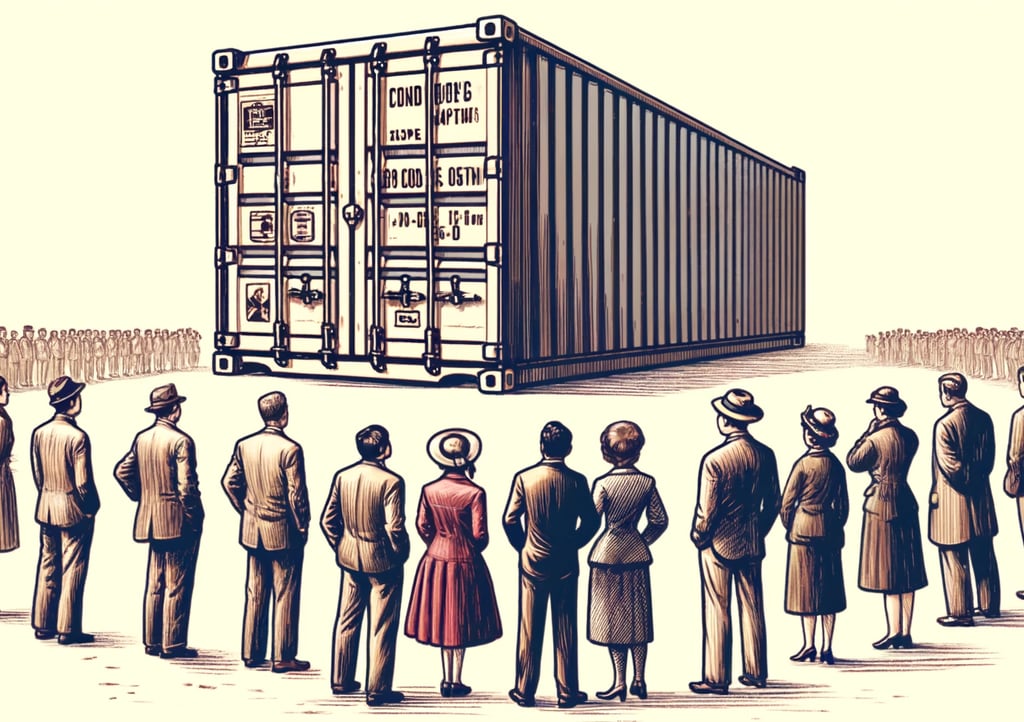"The Box" by Marc Levinson
A review of "The Box" by Marc Levinson. Learn 5 key business lessons on standardization, globalization, and logistics from the history of the shipping container.
BOOKS
The Procure 4 Marketing Team
2/8/20243 min read


Quick Answer: How did the shipping container change the world?
The shipping container, popularized by Malcolm McLean, revolutionized the global economy by introducing standardization. By making cargo uniform, it allowed for intermodal transportation (seamless movement between ships, trucks, and trains). This drastically reduced shipping costs (from dollars to pennies per pound), enabled just-in-time manufacturing, and made true globalization possible by allowing companies to manufacture goods anywhere in the world.
The Box: A Story of Disruption and Standardization
"The Box: How the Shipping Container Made the World Smaller and the World Economy Bigger" by Marc Levinson is not just a history of a metal crate; it is a case study in how a simple innovation can disrupt the entire global economy.
Before the container, loading a ship was a manual, back-breaking process that took weeks. After the container, it took hours. For professionals in procurement and supply chain, the story of the container offers five critical lessons on efficiency, innovation, and the power of systems thinking.
5 Key Lessons for Supply Chain & Marketing Professionals
1. Standardization is the Key to Scale
The container worked not because it was high-tech, but because it was standard. By agreeing on uniform dimensions (20ft and 40ft), the entire world could build cranes, trucks, and ships to handle the same object.
The Lesson: In your own business, look for areas to standardize processes. Bespoke solutions are expensive and slow; standardized solutions allow for massive scalability and automation.
2. It’s Not About the Object; It’s About the System
Malcolm McLean didn't just invent a box; he invented a system. He realized that for the container to work, he needed trucks that could carry it, cranes that could lift it, and ships that could stack it.
The Lesson: When implementing new technology (like a new ERP or procurement software), don't just focus on the tool. You must redesign your entire workflow (the system) to accommodate the new tool, or it will fail.
3. Reduced Friction Leads to Globalization
The book details how the container slashed the cost of shipping. This meant a factory in China could compete with a factory in Chicago. Distance was no longer a cost barrier.
The Lesson: For procurement professionals, this reinforces the reality of the global marketplace. Sourcing decisions are no longer geographically bound, but this comes with the responsibility of managing complex, cross-border supply chains and geopolitical risks.
4. Logistics Is Marketing
Before the container, imported goods were luxury items because shipping was so expensive. The container made shipping so cheap that it became a negligible part of the final product cost.
The Lesson: Logistics enables marketing strategy. Efficient supply chains allow marketers to offer lower prices, faster delivery, and a wider variety of inventory. If the supply chain fails, the brand promise fails.
5. Innovation Creates Winners and Losers
The transition to containerization was painful. It decimated the traditional longshoreman workforce and bankrupted ports (like New York) that couldn't adapt, while creating new hubs (like Oakland and Singapore).
The Lesson: Disruption is inevitable. Professionals must stay adaptable. Clinging to "the way we've always done it" (like the old break-bulk ports did) is a recipe for obsolescence.
Shutterstock
Applying These Lessons Today
For Procurement: Use the concept of standardization to simplify your supplier base. Reduce unique SKUs and harmonize specifications to drive down costs.
For Supply Chain: Focus on intermodal efficiency. How seamlessly does data and product flow between your departments? Identify the bottlenecks where the "hand-off" is slow.
For Marketing: Leverage your logistics as a competitive advantage. Fast, reliable shipping is now a customer expectation, not a perk.
Frequently Asked Questions (FAQ)
Q1: Who invented the shipping container? A: While various forms of containers existed earlier, Malcolm McLean, an American trucking magnate, is credited with the modern intermodal shipping container system in 1956. He had the vision to bypass traffic congestion by putting truck trailers onto ships.
Q2: What is "intermodal" transportation? A: Intermodal transportation involves moving freight using multiple modes of transportation (ship, rail, and truck) without handling the freight itself when changing modes. The shipping container is the tool that makes this possible.
Q3: How did the container affect consumer prices? A: It dramatically lowered them. By reducing the cost of shipping from roughly 25% of a product's value to less than 1%, it became affordable for consumers to buy goods manufactured in countries with lower labor costs, leading to the abundance of affordable consumer goods we see today.

